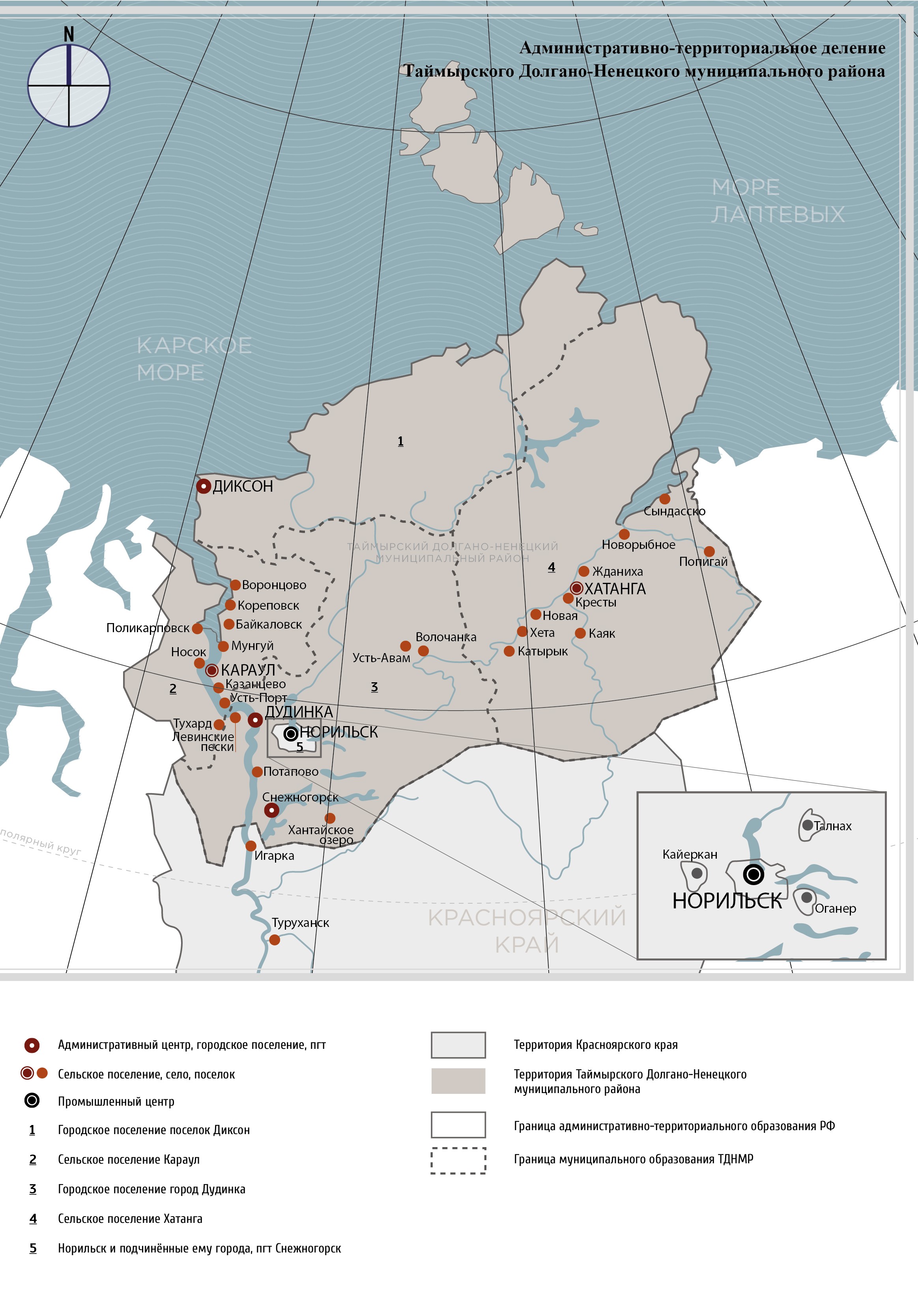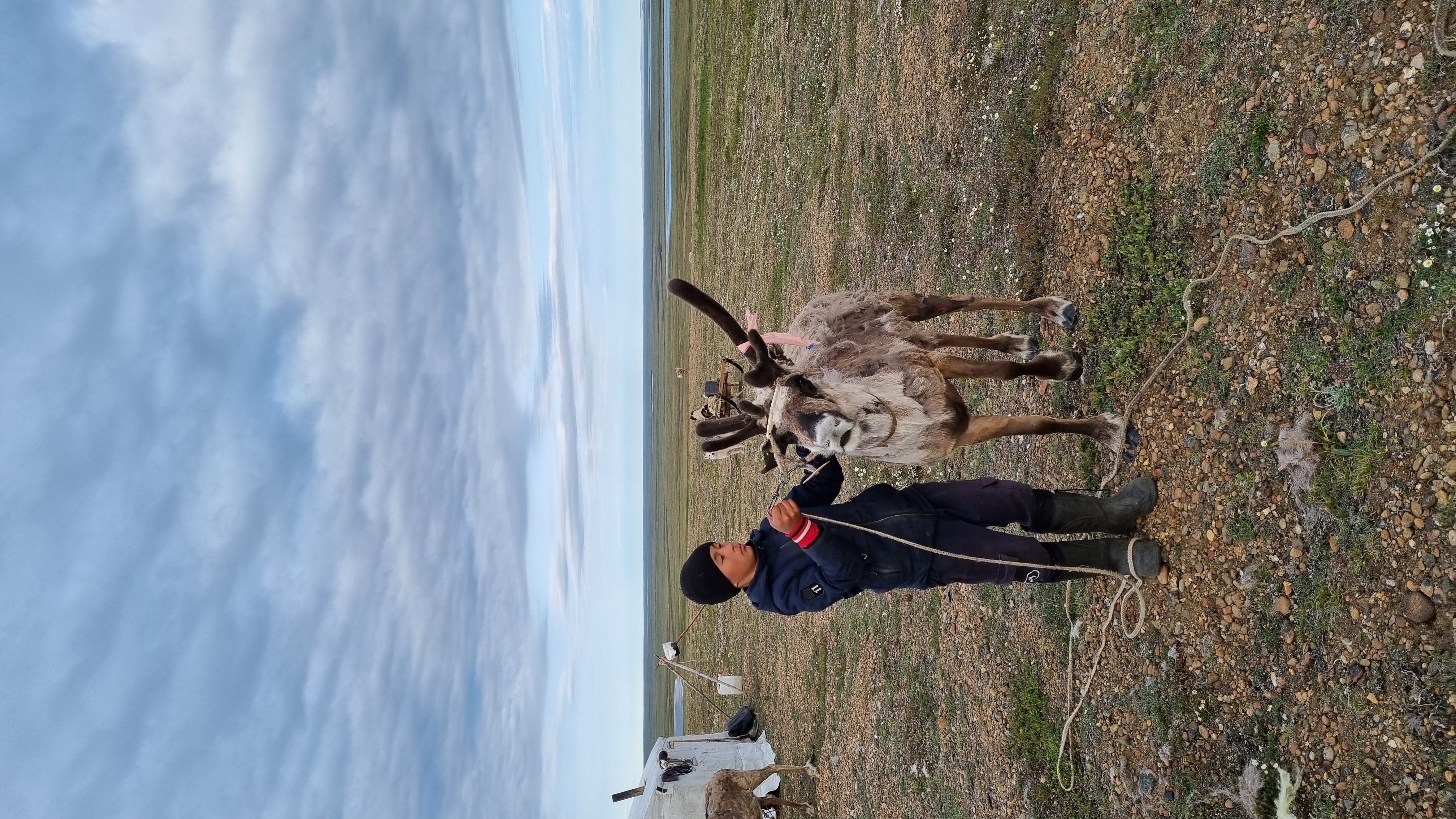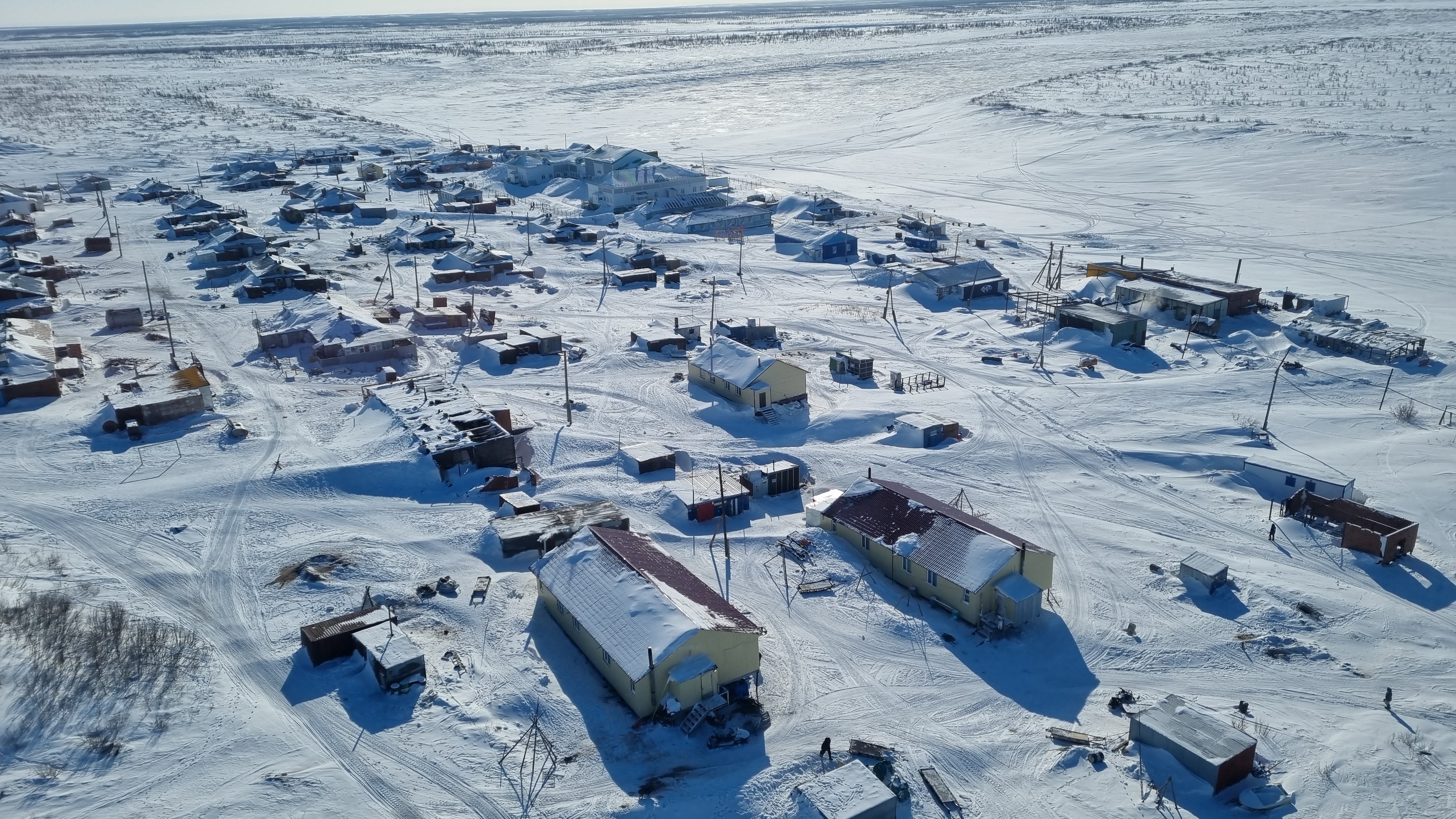|
|
Dr. Davydov Deputy Director for Research, Museum of Anthropology and Ethnography, Russian Academy of Sciences
|
Surrounding Society and the Main Economic Activity of the Region
Dolgans form ethnic communities in two Russian regions: the Krasnoyarsk territory (the Taymyr Dolgan-Nenets municipal district) and the Republic of Sakha (Yakutia) (the Anabar ulus).
The Taymyr Dolgan-Nenets municipal district spans the Taymyr Peninsula, the northernmost peninsula in Asia, several Arctic islands, and the northern part of the Central Siberian Plateau; it constitutes the overland territory of the Russian Arctic. Its area totals 879.9 square kilometers or 37.2% of the Krasnoyarsk territory. It is the territory’s largest municipal district.
The Taymyr Dolgan-Nenets municipal district was established as part of the Taymyr (Dolgan-Nenets) autonomous area under Law No. 308-OkZ “On delimitating the municipal units of the Taymyr (Dolgan-Nenets) autonomous area and endowing them with the status of urban settlements, villages, municipal district” adopted on November 3, 2004 in the Taymyr (Dolgan- Nenets) autonomous area. The Taymyr (Dolgan-Nenets) autonomous area was dissolved on January 1, 2007
The city of Dudinka, a sea and river port, is the administrative center of the Taymyr Dolgan-Nenets municipal district.
The food industry, fuel industry, and power engineering are the district’s principal industrial sectors. Rural and fishing and hunting establishments in the municipal district are mostly engaged in reindeer herding, fishing, and hunting which are traditional occupations of the indigenous small-numbered peoples of the North. Dolgans are engaged in domestic reindeer herding in the village of Khatanga (the settlements of Novorybnoe, Popigay, and Syndassko). The municipal district’s fishing area spans 240 rivers with a total length of 50 km. The Arctic area has 173 lakes suitable for fishing; their total area is 10.2 square kilometers. For the local population, fishing is a source of both food and raw materials for processing.
As of January 1, 2021, the municipal district had 62 culture and arts establishments, the same as in 2019 They include 26 public libraries, 22 community centers, 3 folk arts and crafts centers, 1 culture and recreation center, 1 movie theater, 2 information centers, 5 art schools for children, 1 local museum, and 1 folk arts and crafts house.
The Dolgans form tightly-knit settlements in the Anabar ulus in the Republic of Sakha (Yakutia). The Anabar ethnic (Dolgan-Evenk) ulus (district) is located at the northwest tip of the Republic of Sakha between 71°N and 76°N. The ulus span a large area of 55.6 square kilometers bordering on the Bulun and Olenek uluses of the Republic of Sakha and the Taymyr District of the Krasnoyarsk territory. The entire Anabar ulus lies in the Arctic. In the north, it is bounded by the Laptev Sea which is under ice for 9-10 months a year.
The Anabar ulus has three settlements: the villages of Saskylakh, Yuryung-Khaya, and Ebelyakh. In January 2004, the Anabar ulus was the first municipal unit in Yakutia to be issued certificate No. 004393 on being put on the federal register of municipal units confirming their ethnic status. Dolgans live in the villages of Yuryung-Khaya and Saskylakh.
The Anabar ulus has seven education establishments. Out of those, three are schools (including one grammar school), three are pre-schools, and one is a further education establishment.
The economy of the Anabar ulus rests on traditional Northern occupations: reindeer herding, fishing, and hunting. Diamond mining has been developing for the last few decades as well.
Traditional economic occupations of the indigenous small-numbered peoples (reindeer herding, hunting, mostly wild reindeer, and fishing) are important economic sectors of the Anabar ulus. Spiridonov municipal unitary enterprise and Androsov municipal unitary enterprise are engaged in reindeer herding. As of early 2017, the ulus had eight reindeer herding teams with 96 employees total, including 56 herders and 40 chummakers (female homemakers). Mostly they are herders’ wives. Since 2017, the “chummaker” position has been officially listed on Russia’s occupation register (a Comprehensive program).
Phone landlines and the Internet connection in the ulus are provided by Sakhatelecom, a branch of Rostelecom. Every nasleg (the smallest administrative unit in the Republic of Sakha (Yakutia) equivalent to a village) has mobile services provided by Megafon, MTS, and Beeline.




























































